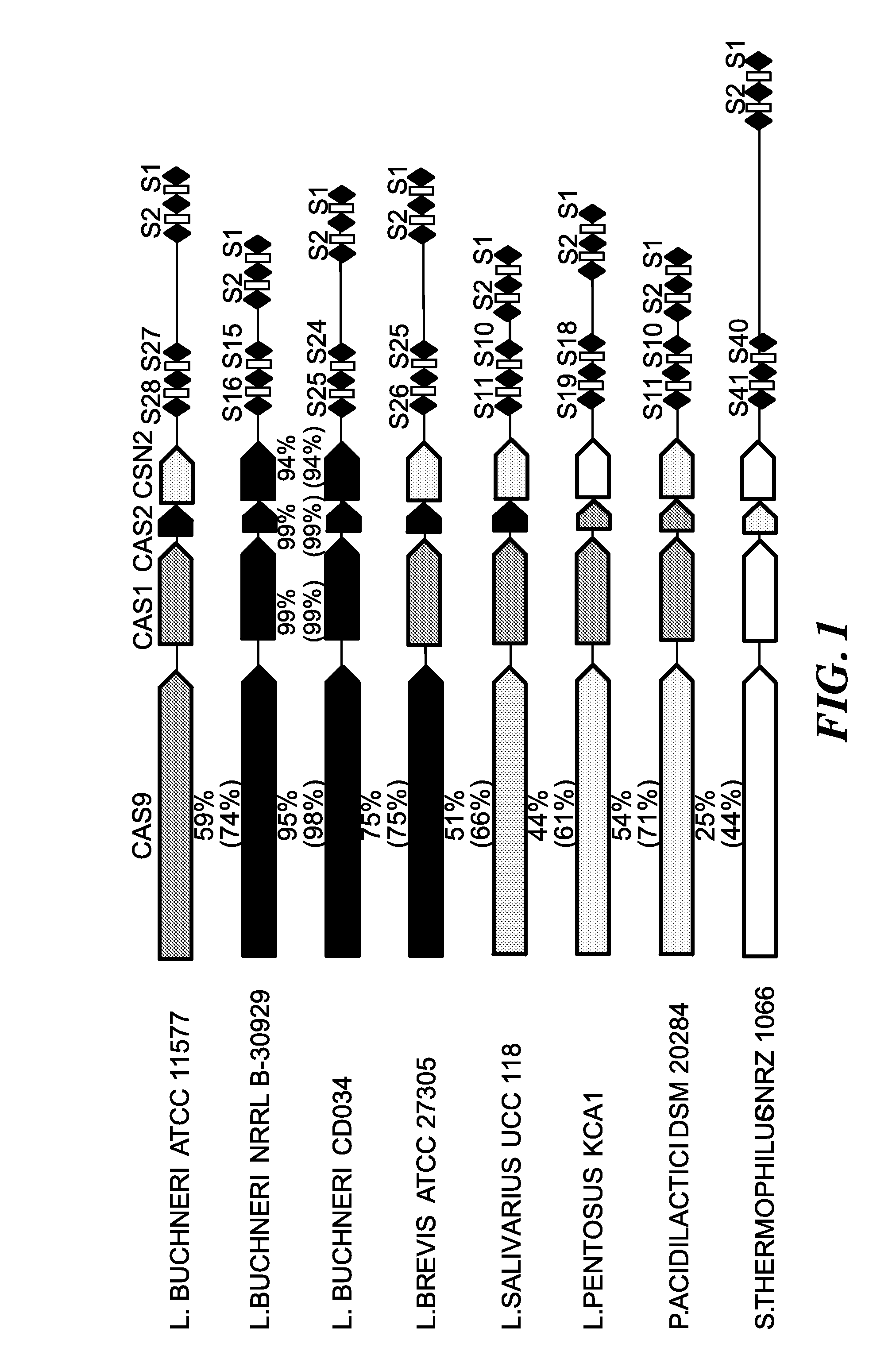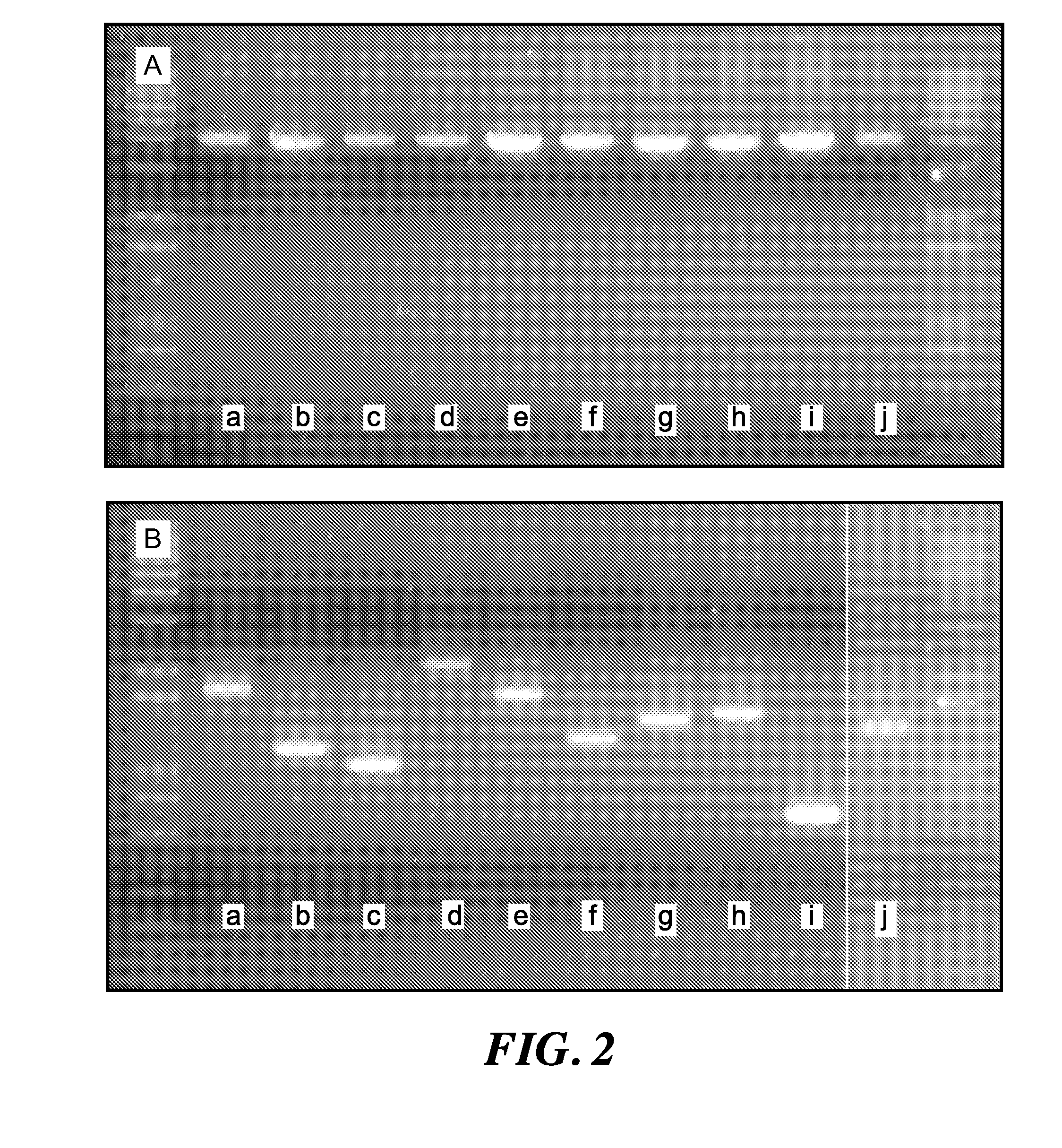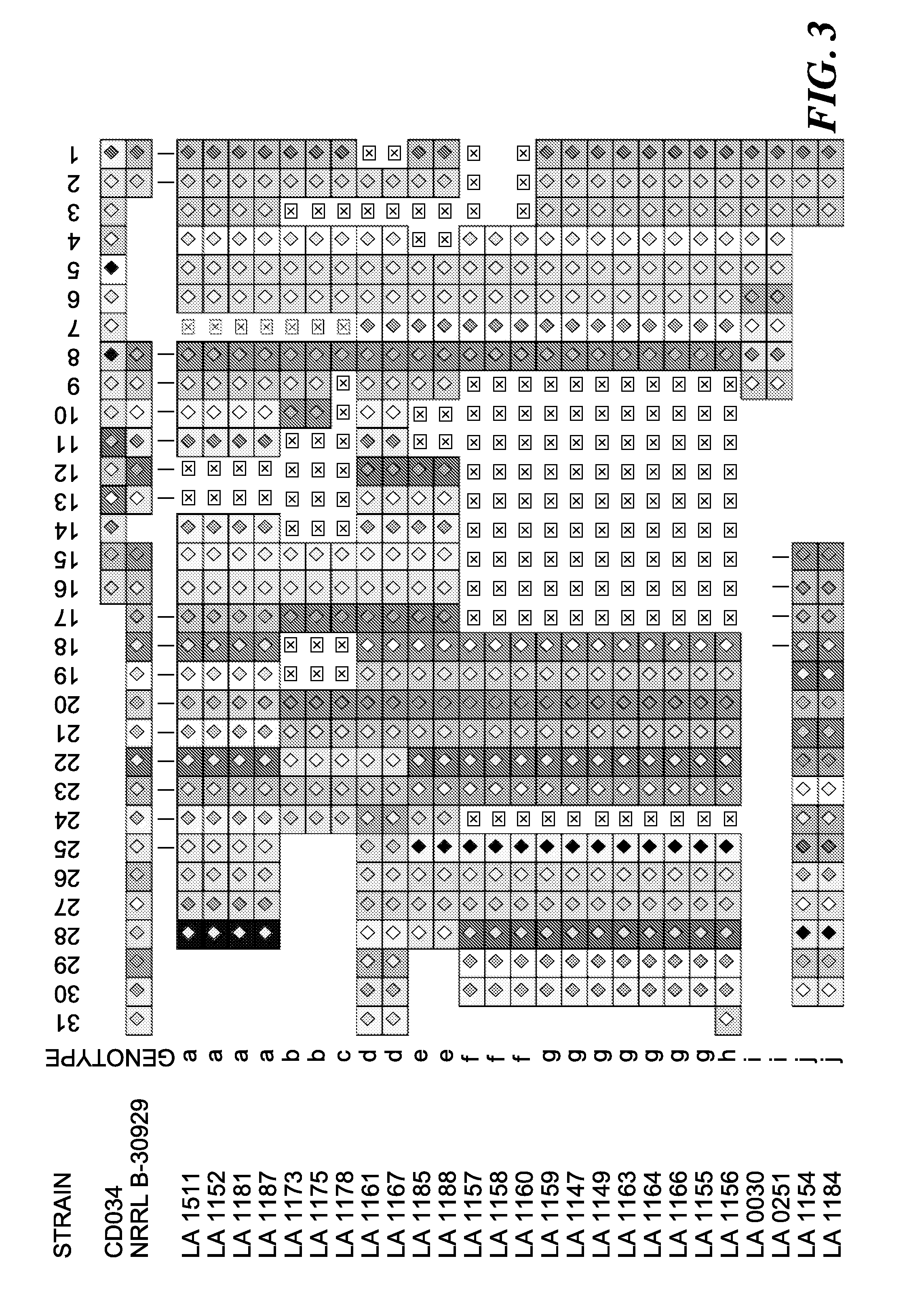Compositions and methods related to a type-ii crispr-cas system in lactobacillus buchneri
a technology of crispr-cas and lactobacillus buchneri, which is applied in the direction of hydrolases, stable introduction of dna, biochemistry apparatus and processes, etc., can solve the problems of spoilage of product, often times challenged by bacteria used in industrial settings for fermentation purposes
- Summary
- Abstract
- Description
- Claims
- Application Information
AI Technical Summary
Benefits of technology
Problems solved by technology
Method used
Image
Examples
example 1
Bacterial Strains, Media and Growth Conditions
[0123]Lactobacillus buchneri strains were obtained from the USDA-ARS Food Science Research Unit, Raleigh, N.C. (Table 1). All samples originate from an industrial manufacturing environment where cucumbers are fermented into pickles. Mixed populations of lactic acid bacteria were first grown on filter-sterilized fermented cucumber slurry (FCS), and then selected for their persistence in a diverse range of pH and salt conditions, and their ability to metabolize lactic acid. Colonies were isolated on MRA-agar plates, and subsequently identified using morphology and 16S DNA sequencing (Franco et al. 2012. Appl. Environ. Microbiol. 78:1273-1284; Johaningsmeier et al. 2012. J. Food Sci. 77:M397-M404). All strains identified at the species level as Lactobacillus buchneri were then used in our study. Strains originated from various sources, including commercial tank of origin and isolation time (Table 1). Isolates were designated by an identific...
example 2
In Silico Analyses
[0124]Two complete Lactobacillus buchneri genome sequences, CD034 (Heinl et al. 2012. J. Bacteriol. 161:153-166) and NRRL B-30929 (3), and an additional draft genome, ATCC 11577, were obtained from GenBank (NC_018610, NC_015428 and NZ_ACGH01000000) at the National Center for Biotechnology Information (http: / / www.ncbi.nlm.nih.gov / ) (Benson et al. 2008. Nucleic Acids Res. 37:D26-31). The CRISPR database CRISPRdb (Grissa et al. 2007. BMC Bioinformatics. 8:172) and CRISPRFinder were used to identify putative CRISPR loci in the published L. buchneri genomes and identify new CRISPR loci in draft genomes, respectively. After identifying several putative CRISPR loci in L. buchneri genomes, the basic local alignment sequence tool, BLAST (Altschul et al. 1997. Nucleic Acids Res. 25:3389-3402), was used to compare and contrast the sequences of cas genes, CRISPR repeats and CRISPR spacers to those of closely related systems, found in Lactobacillus salivarius UCC118, Lactobacil...
example 3
DNA Sequencing of L. buchneri CRISPR-Cas Systems
[0125]To prepare for DNA extraction, cells were propagated overnight, re-suspended in 10 mL of MRS broth and grown at 37° C. in a Coy Laboratories (Grasss Lake, Mich.) anaerobic chamber. After 48 hours, the DNA was extracted using Zymo® Fungal / Bacterial DNA Purification Kit following the special protocol for Gram-positive bacteria. PCR screening for CRISPR repeats was used to determine which CRISPR-Cas system was present in the isolated strains. To screen for the Type II-A repeat found in L. buchneri ATCC 1577, the primers 11577F (5′-GCTTTAGTAGTTCAAAAC-3′) (SEQ ID NO:4) and 11577R (5′-CATCATTGTTTTGAACTACTAC-3′) (SEQ ID NO:5) were used. To screen for the Type II-A repeat found in L. buchneri CD034 and NRRL B-30929, the primers CD034F (5′-GGGTTTAACCTTATTGATTTAAC-3′) (SEQ ID NO:6) and CD035R (5′-GAAGGATGTTAAATCAATAAGG-3′) (SEQ ID NO:7) were used. PCR amplification of the cas9 gene was performed using the primer set Cas9.1 (5′-CCTTCAGACTGA...
PUM
| Property | Measurement | Unit |
|---|---|---|
| Fraction | aaaaa | aaaaa |
Abstract
Description
Claims
Application Information
 Login to View More
Login to View More - R&D
- Intellectual Property
- Life Sciences
- Materials
- Tech Scout
- Unparalleled Data Quality
- Higher Quality Content
- 60% Fewer Hallucinations
Browse by: Latest US Patents, China's latest patents, Technical Efficacy Thesaurus, Application Domain, Technology Topic, Popular Technical Reports.
© 2025 PatSnap. All rights reserved.Legal|Privacy policy|Modern Slavery Act Transparency Statement|Sitemap|About US| Contact US: help@patsnap.com



